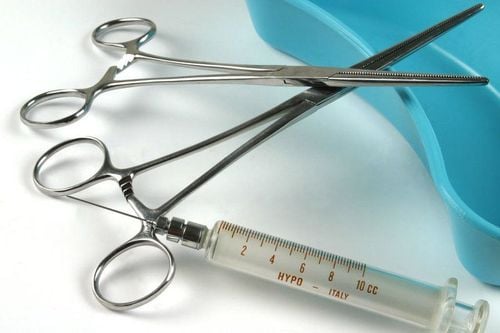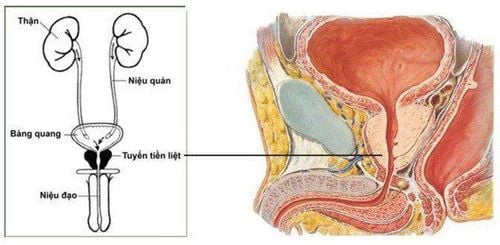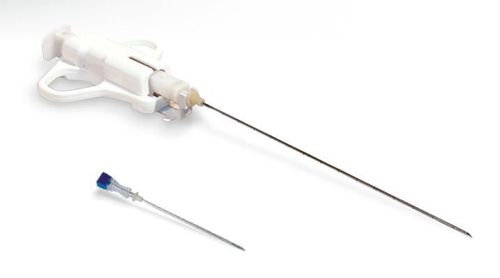This is an automatically translated article.
Article written by Master, Doctor Nguyen Van Khanh - Pathologist - Laboratory Department - Vinmec Times City International Hospital
Tissue or cell samples can be taken from any part of the body. How tissue samples are taken depends on the location of the tumor and what type of cancer is suspected. For example, the methods used for skin biopsies are very different from those used for brain biopsies.
Some types of biopsies remove an entire body organ. These biopsies are only done by surgeons. Some other types of biopsies remove tumor samples through a fine needle or through an endoscope. These biopsies are usually done by surgeons, but can also be done by other doctors.
1. Needle biopsy
There are two types of needle biopsies:
A fine needle biopsy is also called a fine needle aspiration. A core needle biopsy is also called a core biopsy. Fine needle aspiration
Fine needle aspiration (FNA) is a procedure that uses a very thin, hollow needle attached to a syringe to remove a small amount of fluid and a very small piece of tissue. of the tumour. If the tumor is near the surface of the body, the doctor may feel the tumor during aspiration. If the tumor is deeper inside the body and the doctor can't feel it, the doctor will do aspiration under the guidance of ultrasound or CT scan.
The main advantage of FNA is that there is no need to cut the skin and in some cases the same day diagnosis can be obtained. The disadvantage of FNA is that sometimes it is not possible to obtain enough tissue samples for diagnosis. Although FNA is a type of biopsy, it is still considered a cytological test.
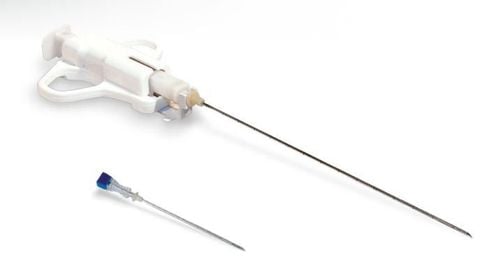
2. Core biopsy
The needle used in the core biopsy is slightly larger than the needle used in fine-needle aspiration (FNA). They remove a small cylindrical piece of tissue (about 1mm in diameter and about 12mm in length). Core biopsies are performed with local anesthesia in a clinic or hospital. Like fine-needle aspiration (FNA), needle biopsies can be done blindly if the physician feels a tumor or under the guidance of imaging methods.
Sometimes doctors use special vacuum tools to remove larger core biopsies from breast tissue.
Processing of tissue samples from core biopsies usually takes longer than with fine needle aspiration samples, so the results of core biopsy tests may take longer (At Vinmec Times Hospital City, the results are usually returned after 3-5 working days from the time of receiving the sample).
3. Excisional biopsy
In this type of biopsy, the surgeon cuts through the skin to remove the entire tumor (called an open biopsy) or remove a small part of a large tumor. This procedure is usually accompanied by local or regional anesthesia. If the tumor is inside the chest or inside the abdomen, general anesthesia is needed (medications used to put the patient into a deep sleep so they won't feel pain).
4. Endoscopic biopsy
A flexible bronchoscope with a camera that allows the doctor to see inside different parts of the body. Tissue samples can be removed through the bronchoscope.
There are different types of scopes used to look at different parts of the body. For example, a type of bronchoscope is used to look inside the nasal cavity, sinuses, and throat. Another type of scope is used to view the upper part of the digestive tract, such as the esophagus (the tube-shaped organ that connects the throat to the stomach), the stomach, and the first part of the small intestine.
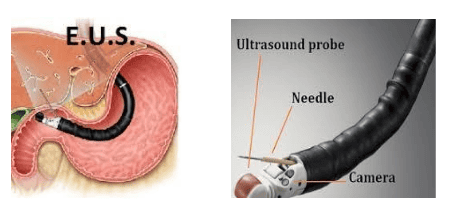
Abdominal, thoracic and mediastinal biopsies
Abdominal biopsies are like laparoscopy but use a slightly different scope (laparoscope) to look inside the abdomen and take samples tissue. A small cut is made in the abdominal wall and a laparoscope is inserted into the abdomen through this cut to look inside. Procedures like these to look inside the chest are called thoracoscopy and mediastinoscopy.
Laparotomy and thoracotomy
Laparotomy is a type of surgery that cuts into the abdomen. Usually a longitudinal cut from the upper part of the abdomen to the lower part of the abdomen. This technique may be used when the suspected area cannot be diagnosed with simpler tests (such as fine-needle biopsy or laparoscopy).
During laparotomy, a biopsy sample may be taken from the suspected area. The doctor may also observe the size of the suspected area and its location. Suspicious cochlear tissue samples may also be examined. General anesthesia is used (the patient sleeps deeply so they will not feel any pain). A similar procedure when opening the chest is called a thoracotomy
5. Skin biopsy
There are many ways to do a skin biopsy. The doctor will choose the biopsy method that is most suitable for the tumor. Shave biopsies are the removal of the outermost layer of skin and are the best biopsy for some skin cancers such as basal cell skin cancer or squamous cell skin cancer, but they are often not Used when skin tumors are suspected to be malignant melanomas (melanoma). Punch biopsies or open biopsies (discussed above) are biopsy methods that capture deeper layers of skin and can be used to find out if melanoma (melanoma) how deep into the skin it has penetrated is an important factor in choosing a treatment for that type of cancer.
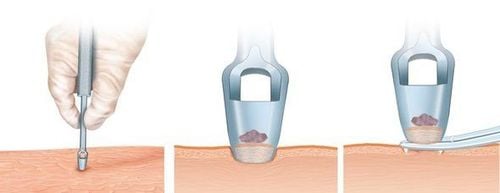
6. Biopsy and sentinel lymph node mapping
Lymph node mapping helps surgeons know which lymph nodes to remove for biopsy. Sentinel lymph node mapping and biopsies have become a common way to find out if cancer (especially melanoma or breast cancer) has spread to the lymph nodes. This test can find lymph nodes according to the lymph fluid from where the cancer started. If the cancer has metastasized, these lymph nodes are often the first site the cancer will go to. This is why these lymph nodes are called sentinel nodes (that is, the standing nodes that watch over the tumor area).
To find the sentinel nodes, the doctor injects a small amount of mildly radioactive material into the cancer area. By examining different lymph node areas with a radioactive detector, your doctor can find the group of lymph nodes to which the cancer is most likely to spread. The doctor then injects a small amount of harmless blue dye into the cancer site. After about an hour, the surgeon will make a small cut in the skin to see the lymph node area that was found by the radiation test. These lymph nodes are then examined to see which ones turn blue or become radioactive. (Sometimes a dye and radioactive agent can be used at the same time, or either type can be used.)
When the sentinel lymph node is found, it is removed and examined under a microscope. If the sentinel lymph nodes do not contain cancer cells, there is no need to remove additional lymph nodes because it is very unlikely that cancer cells have spread to these nodes. If cancer cells have been found in the sentinel lymph nodes, the lymph nodes that remain in this area must also be removed and tested to look for cancer cells.
Vinmec International General Hospital is one of the hospitals that not only ensures professional quality with a team of leading medical doctors, modern equipment and technology, but also stands out for its examination and consultation services. comprehensive and professional medical consultation and treatment; civilized, polite, safe and sterile medical examination and treatment space.
Any questions that need to be answered by a specialist doctor as well as customers wishing to be examined and treated at Vinmec International General Hospital, please register for an online examination on the Website for the best service.
Please dial HOTLINE for more information or register for an appointment HERE. Download MyVinmec app to make appointments faster and to manage your bookings easily.
References: American Cancer Society




